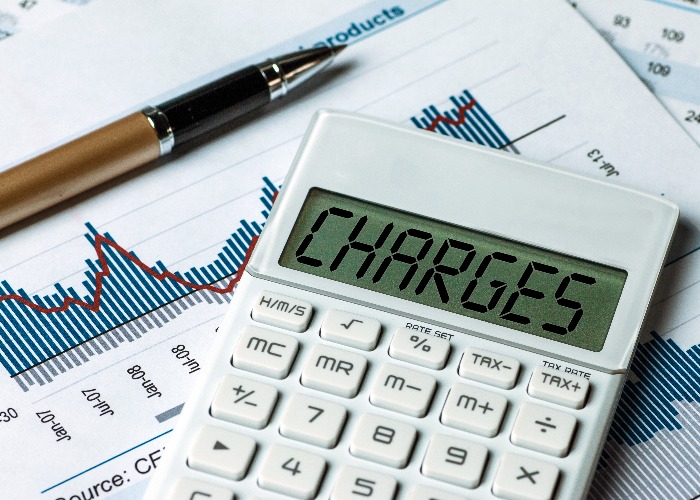Charges levied on Stocks & Shares ISAs are often overlooked but they can make a huge difference to the returns generated.
That’s why it’s essential to know exactly what you’re being charged, according to Alex Neilson, investment manager at Investec Click & Invest.
“Reducing those costs is one of the easiest ways to increase performance over the longer term,” he says.
“Conversely, high charges can really eat into your returns.”
He points out this may particularly be the case with older ISAs in which the underlying fund charges and commissions may be out of kilter with more modern products.
“A fee that was competitive in 2000 when they opened the ISA may not now be very competitive in comparison to what they could get elsewhere,” he explains.
This article is part of a wider series on investing, covering all areas from stocks and shares to buy-to-let, peer-to-peer and alternative investments. Click here to view the full guide.
The real cost of fees
In recent years, the strong growth of many funds has disguised the effect of fees.
But with some funds' performance now struggling, those fees will eat away at your original investment, warns James Norton, senior investment planner at investment platform Vanguard.
"You can't control the way markets behave; no investment is guaranteed. But you can definitely control one thing: your costs.
"When market returns are relatively modest, as we expect them to be going forward, all the more so, because if your costs are too high it can effectively kill your return or even leave you out of pocket."
Take the same investment fund, which isn't growing, with £100 invested. Bought through one investment platform you'll pay an annual 2% fee, bought through a different platform you'll pay an annual 0.5% fee (both of which are possible).
Over five years, the fund in the more expensive 2% platform would have declined to £90.39. The fund in the cheaper platform would still be worth £97.52.
After a decade of no growth, the fund in the 2% platform would be worth £81.71 – losing almost a fifth of its value – while the fund in the cheaper platform would be worth £95.11 (excluding the underlying fund fee and inflation).
What are the charges you need to consider?
According to Martin Bamford, managing director of Informed Choice, investors will face three main charges when it comes to Stocks & Shares ISAs.
“There’s the cost of fund management, which is best expressed as an ongoing charge,” he says.
“This ranges from a few basis points for the cheapest index tracker funds to 2% or more for some actively managed funds. “
Secondly, investors will often pay for a platform or administration charge, which covers the cost of the ISA tax wrapper.
“Depending on your chosen platform, this could be in the range of 0.2% to 0.45%,” he explains.
Finally, if the investor chooses to use a financial adviser, they will pay their fees which could range from 0.5% to 1%.
“In terms of the total cost, something in the region of 1.5% is reasonable, as long as you are getting good value for money in return,” he adds.
Robo-investing: cheapest and best digital platforms for your Stocks and Shares ISA
Fees to keep an eye out for
Platform fees
These can vary enormously.
Some may charge you a flat fee, which is obviously a good idea for investors putting away large sums, while others prefer to base it on a percentage of the value of your funds.
Of course, the larger your fund, the more you’ll pay.
Annual management fee
This fee is the charge for an investment firm to look after your ISA.
“It pays for the monitoring of your portfolio throughout the year and the decision to make changes such as moving into different regions,” explains Investec’s Alex Neilson.
“It’s the fee that allows us to operate as a business, to run your portfolio.”
Underlying fund fee
These are the charges to invest in the actual funds. “This figure is what funds charge to invest in the fund or the asset that they’re offering,” he says.
“Underlying fund fees with an active approach are slightly more than passive,” he says.
Transferring investments
Some providers may charge an exit fee if you want to transfer your investments to a rival firm or platform.
Account closure fee
You may face fees for closing down your account completely. It’s worth clarifying from the outset if such charges exist and how much it would be.
It’s important to read the small print and find out all the costs involved, according to Alex Neilson.
“You need to be wary of all these costs – especially those that charge you for adding or withdrawing money, as well as those levying commission fees,” he adds.
The cheapest investment platforms for ISAs compared
How to find a cheaper provider
As with other financial products, it's crucial you shop around.
Many investment platforms aim to be low-cost, such as AJ Bell YouInvest, Cavendish Online and Vanguard (for more click here).
Their platform fees are very low - 0.25% or below - but they may offer less assistance and be more suitable for experienced investors.
One alternative is robo-investing with platforms such as Nutmeg, Wealthsimple or Wealthify. These platforms can pick you a portfolio, automatically tweak it and even provide financial advice (from a real human being), with platform fees below 1%.
We've put together a guide to robo-investing platforms that you can read here.
